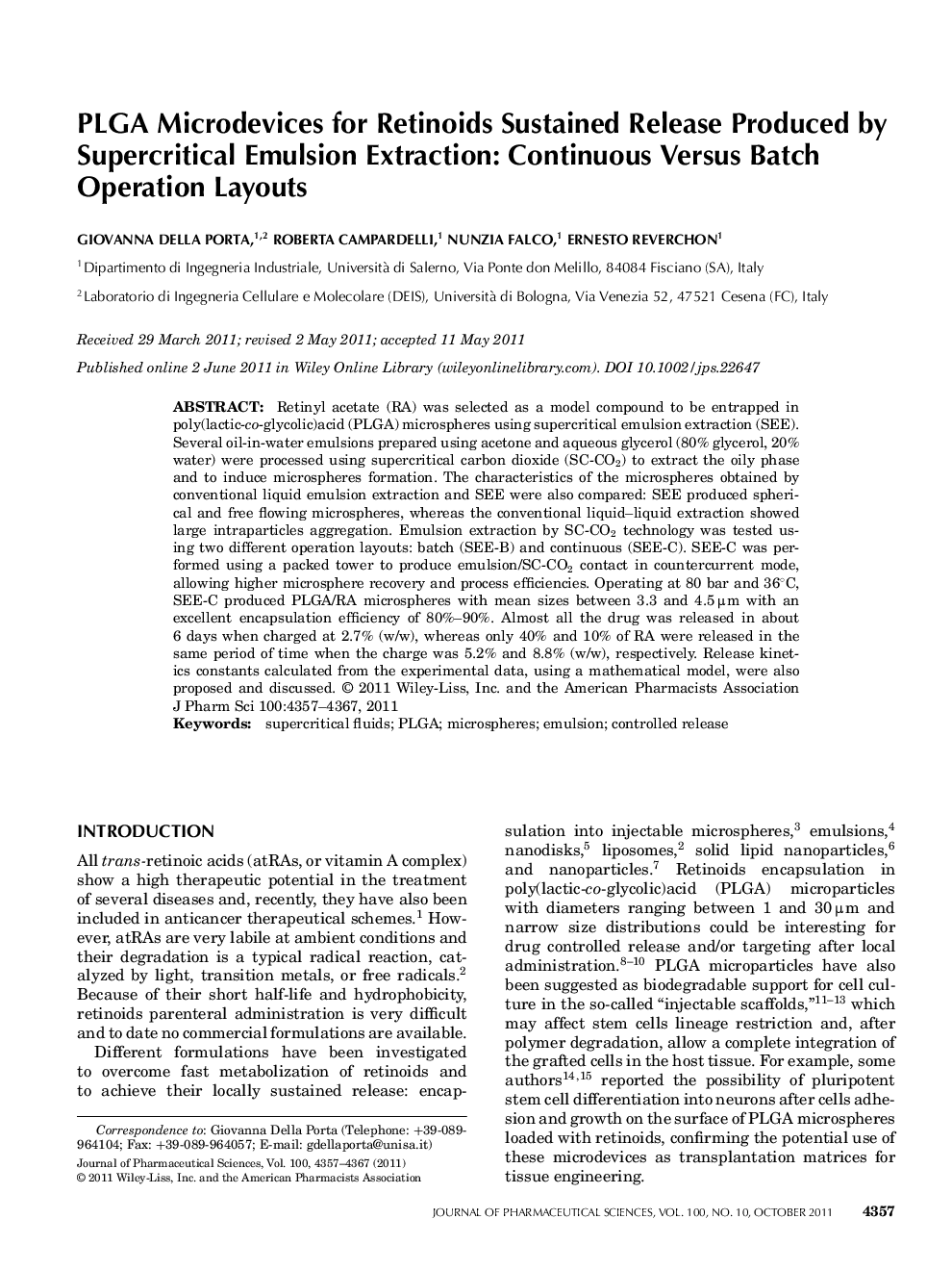| Article ID | Journal | Published Year | Pages | File Type |
|---|---|---|---|---|
| 2485307 | Journal of Pharmaceutical Sciences | 2011 | 11 Pages |
Abstract
Retinyl acetate (RA) was selected as a model compound to be entrapped in poly(lacticâcoâglycolic)acid (PLGA) microspheres using supercritical emulsion extraction (SEE). Several oilâinâwater emulsions prepared using acetone and aqueous glycerol (80% glycerol, 20% water) were processed using supercritical carbon dioxide (SCâCO2) to extract the oily phase and to induce microspheres formation. The characteristics of the microspheres obtained by conventional liquid emulsion extraction and SEE were also compared: SEE produced spherical and free flowing microspheres, whereas the conventional liquid-liquid extraction showed large intraparticles aggregation. Emulsion extraction by SCâCO2 technology was tested using two different operation layouts: batch (SEEâB) and continuous (SEEâC). SEEâC was performed using a packed tower to produce emulsion/SCâCO2 contact in countercurrent mode, allowing higher microsphere recovery and process efficiencies. Operating at 80 bar and 36°C, SEEâC produced PLGA/RA microspheres with mean sizes between 3.3 and 4.5âμm with an excellent encapsulation efficiency of 80%-90%. Almost all the drug was released in about 6 days when charged at 2.7% (w/w), whereas only 40% and 10% of RA were released in the same period of time when the charge was 5.2% and 8.8% (w/w), respectively. Release kinetics constants calculated from the experimental data, using a mathematical model, were also proposed and discussed. © 2011 WileyâLiss, Inc. and the American Pharmacists Association J Pharm Sci 100:4357-4367, 2011
Related Topics
Health Sciences
Pharmacology, Toxicology and Pharmaceutical Science
Drug Discovery
Authors
Giovanna Della Porta, Roberta Campardelli, Nunzia Falco, Ernesto Reverchon,
